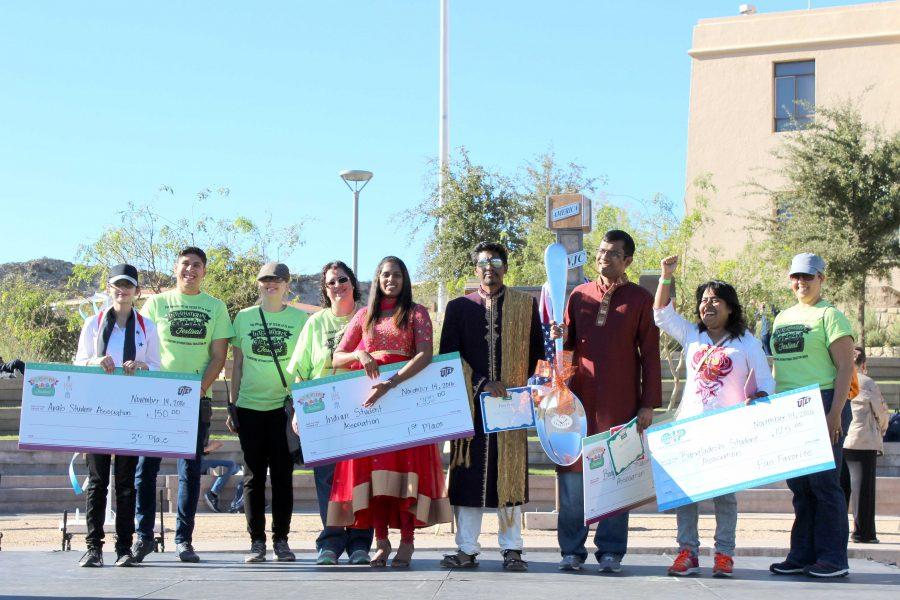Centennial Plaza became a mecca of international food this past Monday, Nov. 14. Student organizations ranging from the University Cricket Club (the sport, not the insect) to the Academic Revival of Indigenous Studies and Education, or ARISE, spent the weekend cooking dishes from different countries for a chance to win funds for their organization.
Among the dizzying array of foods available for students—from blue corn cakes to piña coladas to jaffa chicken— it was the Indian Student Association’s home country’s cuisine that took first place. The student organization offered a menu of samosas, a triangular fried pastry stuffed with potato and chicken tandoori, a marinated chicken cooked in a clay pot. For dessert, the student organization served ras malai, a cheese patty dressed in a sugar syrup, and gulaab jamun, or rolled dough balls drizzled in the same syrup.
Coating the tongue in yet another intense flavor, the students served one of India’s most popular drink, a blend of mango pulp and milk called mango lassi.
Prachi Matharasi, a graduate student pursuing her master’s degree in public health, was one of the students who helped prepared the dishes.
“None of the recipes are from the Internet,” Matharasi said. “The recipes were taught to us since we were little girls from our mothers and grandmothers. The spices and ingredients we bought fresh and prepared everything ourselves.”
Although the day was dedicated to the cuisines of our world, there were other dimensions in the competition that judges were looking for. While presentation, taste and adherence to the country’s cooking traditions were important, the booths that the organizations used for the day also had to be decorated in the fashion of the country they represented. In this category, the Indian Student Association set a high standard for future food fairs.
“Our decorations were handmade and have meanings behind them,” Matharasi said. “We tied mango leaves over our booth because, in India, to put mango leaves on your door is to say ‘welcome.’”
Matharasi then pointed to the folded bits of paper that acted as stand-ins for marigold flowers. In Indian culture, Matharasi said, marigolds are used in festivals and times of celebration.
Along with the paper cut outs of elephants and birds, two animals that are ubiquitous in Indian culture, geometric diagrams adorned the back walls that, to the casual observer, would be no more than decorations. This is not the truth, however. These were kolams, drawings written on the floor of Indian households in the morning, usually by female family members, to symbolically bring peace and prosperity.
This was but one of at least eight booths available to students wishing to experience a different kind of eating. Nicole Aguilar, director of the Office of Student Life, the department responsible for the International Food Fair and the International Culture Festival, said events were happening Nov. 14 through Nov. 18.
“Since my office took over planning this event last year, it’s been my favorite event to plan,” Aguilar said. “I wish we could do it once a month. It’s just so important to promote diversity and let people know that UTEP is diverse.”
Aguilar made it a point to say that not only does UTEP support diversity, but that UTEP as it stands is diverse.
“All these booths here are UTEP, ” Aguilar said. “These organizations came to us and asked to participate. Just by attending the food fair you see just how much of the world is represented at UTEP.”






